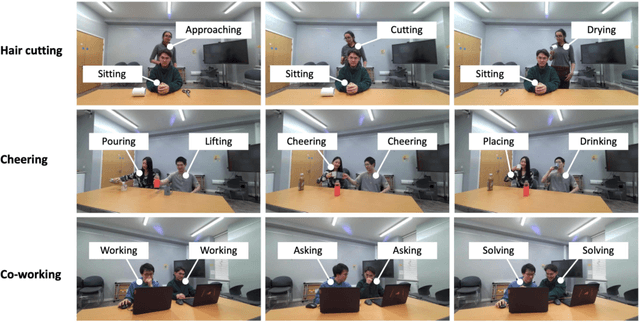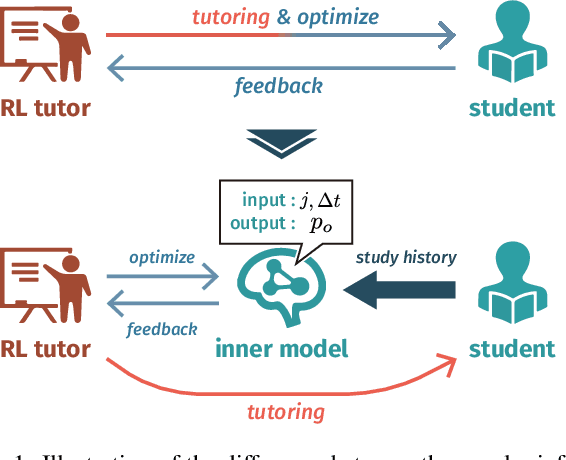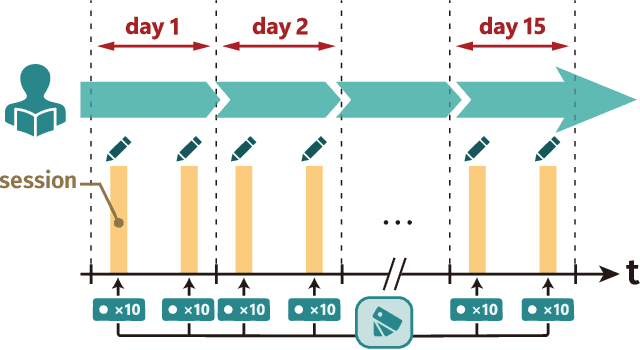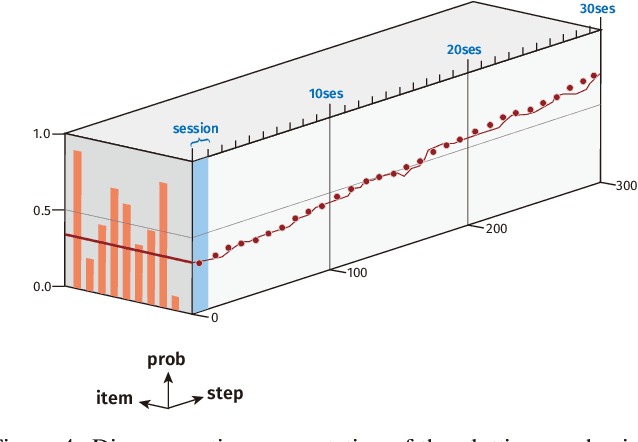Yoshiki Kubotani
Detect Fake with Fake: Leveraging Synthetic Data-driven Representation for Synthetic Image Detection
Sep 13, 2024Abstract:Are general-purpose visual representations acquired solely from synthetic data useful for detecting fake images? In this work, we show the effectiveness of synthetic data-driven representations for synthetic image detection. Upon analysis, we find that vision transformers trained by the latest visual representation learners with synthetic data can effectively distinguish fake from real images without seeing any real images during pre-training. Notably, using SynCLR as the backbone in a state-of-the-art detection method demonstrates a performance improvement of +10.32 mAP and +4.73% accuracy over the widely used CLIP, when tested on previously unseen GAN models. Code is available at https://github.com/cvpaperchallenge/detect-fake-with-fake.
Geometric Features Informed Multi-person Human-object Interaction Recognition in Videos
Jul 19, 2022



Abstract:Human-Object Interaction (HOI) recognition in videos is important for analyzing human activity. Most existing work focusing on visual features usually suffer from occlusion in the real-world scenarios. Such a problem will be further complicated when multiple people and objects are involved in HOIs. Consider that geometric features such as human pose and object position provide meaningful information to understand HOIs, we argue to combine the benefits of both visual and geometric features in HOI recognition, and propose a novel Two-level Geometric feature-informed Graph Convolutional Network (2G-GCN). The geometric-level graph models the interdependency between geometric features of humans and objects, while the fusion-level graph further fuses them with visual features of humans and objects. To demonstrate the novelty and effectiveness of our method in challenging scenarios, we propose a new multi-person HOI dataset (MPHOI-72). Extensive experiments on MPHOI-72 (multi-person HOI), CAD-120 (single-human HOI) and Bimanual Actions (two-hand HOI) datasets demonstrate our superior performance compared to state-of-the-arts.
RLTutor: Reinforcement Learning Based Adaptive Tutoring System by Modeling Virtual Student with Fewer Interactions
Jul 31, 2021



Abstract:A major challenge in the field of education is providing review schedules that present learned items at appropriate intervals to each student so that memory is retained over time. In recent years, attempts have been made to formulate item reviews as sequential decision-making problems to realize adaptive instruction based on the knowledge state of students. It has been reported previously that reinforcement learning can help realize mathematical models of students learning strategies to maintain a high memory rate. However, optimization using reinforcement learning requires a large number of interactions, and thus it cannot be applied directly to actual students. In this study, we propose a framework for optimizing teaching strategies by constructing a virtual model of the student while minimizing the interaction with the actual teaching target. In addition, we conducted an experiment considering actual instructions using the mathematical model and confirmed that the model performance is comparable to that of conventional teaching methods. Our framework can directly substitute mathematical models used in experiments with human students, and our results can serve as a buffer between theoretical instructional optimization and practical applications in e-learning systems.
 Add to Chrome
Add to Chrome Add to Firefox
Add to Firefox Add to Edge
Add to Edge